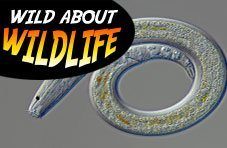Enjoy your time at Springbok Casino
Wild About Wildlife:The worm from hell

Several years ago scientists were surprised to find a new species living 3.5 km below the surface of the Earth. The reason this was considered to be an amazing discovery is that, until then, it was believed that no form of life more complex than a single-celled bacteria could possibly survive at such depths. Officially named Halicephalobus mephisto, the new worm got nicknamed both the Worm from hell and Devil-worm.
The Incredible Ways of Evolution
You may or may not know, but the conditions so deep down are quite harsh; there's very little oxygen and it's incredibly hot. Add to that a lack of food and space constraints, and it's no wonder why anybody has yet to look for signs of life there in the first place. Someone apparently decided to think outside of the box, and as a result, in 2011 worms were found in three gold mines in the Witwatersrand basin near Johannesburg. Belgian nematologist Gaetan Borgonie, together with a team of experts, has spent a year of his life boring into mines, retrieving water samples and filtering them for nematodes (roundworms). It took more than 30,000 liters to confirm what he had already suspected: that the little creatures were not a matter of surface contamination as in they were brought in by miners, but the worms actually came out of the rock.
The worm which feeds on bacteria is only 0.5 mm long and lives in fluid-filled rock fractures, bathing in 48oC water. Using carbon dating of said fluid, experts have concluded that these little guys have been around for as long as 3,000, to possibly even 10,000 years.
Halicephalobus mephisto is capable of sexual reproduction and researchers managed to get it to reproduce in a lab environment. Having ignored above-ground treats such as E. Coli, the new lab inhabitant has demonstrated clear preference for diet consisting of bacteria living in deep rock fractures. It is assumed that the newly discovered life form had at one point, evolved on the Earth's surface and began to make its way further down, adapting genetically on the way.
Extraterrestrial Life Reconsidered
This discovery has led to speculations of what other unknown life forms might be hiding elsewhere on Earth, but also deep below the surface of other planets, Mars for one. Apparently the subsurface biosphere is not necessarily too extreme for multicellular organisms, so there’s hope we could find living organisms even in places where life above ground is impossible beyond any doubt.



